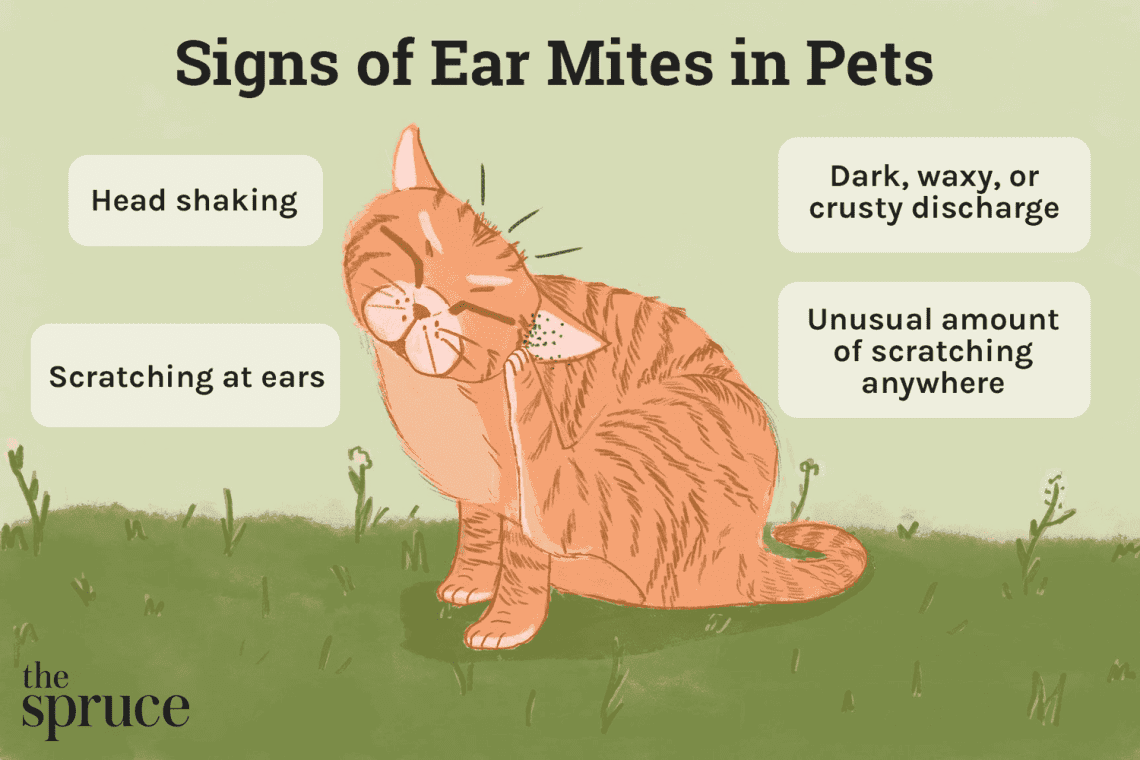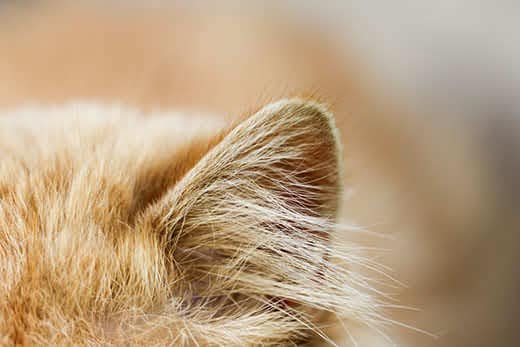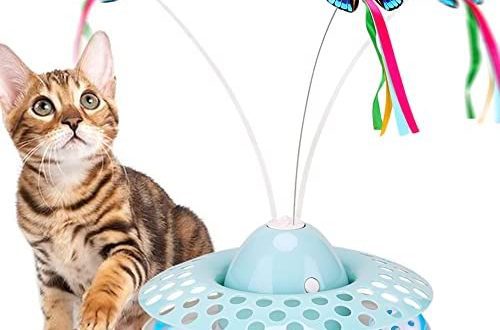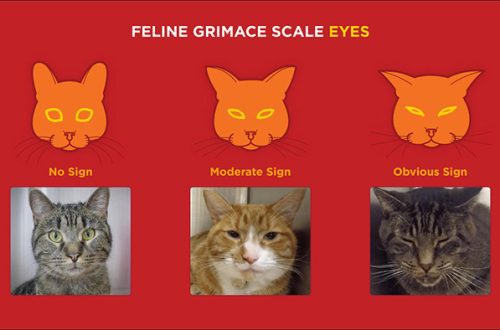
Ear infections in cats: symptoms, diagnosis, treatment and prevention
If a beloved cat scratches and shakes its head, and there is a coating or an unpleasant smell in it, it may have an ear infection. What do you need to know about this condition?
Contents
Ear Infections in Cats: How They Occur
Whereas infections usually develop in the middle or inner ear in humans, outer ear infections are more common in cats. This type of infection affects the auricle – the outer part of the ear – and part of the ear canal up to the eardrum. In some cases, outer ear infections can lead to perforation of the eardrum and other problems in the inner and middle ear.
Veterinarians classify ear infections in cats by the type of pathogen. They are caused by yeast, bacteria, earticks or a combination of them.
Causes of Ear Infections in Cats
According to Council for the Prevention of Parasites in Companion Animals, Ear mites in cats are common mites that live on the surface of the ears of pets, including cats, dogs, and ferrets. Parasites are highly contagious and are transmitted through direct contact. Because of their high infectivity, ear mites are a serious problem in environments where large numbers of cats live together, such as in shelters. Fortunately, people cannot get infected with them.
And if ear infections in kittens are, as a rule, ear mites, then fungal and bacterial infections are more often observed in older animals. In kittens, fungal and bacterial infections are usually secondary to ear mite infestation.
Ear infections caused by yeast or bacteria may be secondary to a parasite infestation or may develop as a result of an allergy. A small amount of yeast and bacteria living in the ear canal is normal, but if the balance in the ear is disturbed for any reason, such as parasites, polyps, or allergies, the cat may develop a secondary bacterial or fungal infection.

Signs of Ear Infections in Cats
Most cats are very clean. A normal, healthy ear of a pet is pink, sometimes with pigment spots, has no plaque and no smell. An infected ear looks very different. If your cat has an ear infection, you may notice any or all of the following:
- persistent ear scratching or head shaking;
- drooping ears, when they are usually upright
- redness or signs of scratching in the ear
- discharge of black, dark brown, white, yellow or green
- bad smell from the ear
- aggression towards the owner if he tries to touch her ears
Diagnosing Ear Infections in Cats
Your veterinarian will be able to determine if your cat has an ear infection based on the results of a physical examination and laboratory tests. Most likely, he will examine the cat’s ear with an otoscope and take a swab from the ear. Then, depending on the results of the examination, he will prescribe treatment.
Treatment of ear infections
Treatment depends on the specific type of infection the cat has. If the eardrum is not perforated, a thorough cleaning of the ears is usually recommended. It is necessary to remove plaque and dirt that can reduce the effectiveness of drugs, as well as to remove live ear mites and their eggs.
If a cat doesn’t like the idea of having their ears cleaned, a veterinarian may recommend sedation. So he will have the opportunity to thoroughly clean the ear canal. The owner can be sent home to clean the cat’s ears on their own by prescribing a special tool. In this case, you must definitely ask the specialists of the veterinary clinic to show how to do it correctly.
If your pet has an ear mite, your veterinarian will usually inject a dose of medication into your cat’s ear to clear up the infestation. Without treatment, they spread quickly and can infect many other animals. In addition, ear infections are painful and can cause a lot of discomfort to your pet.
If the cat has a fungal or bacterial infection, the veterinarian will either give her a dose of medication or send her home for a course of medication. Is always necessaryto givecatdrugs strictly in accordance with the instructions. Treatment should not be stopped even if the ear begins to look better. If the cat does not drink the entire course of medication to the end, the infection may return. The veterinarian will likely suggest a follow-up visit to make sure the infection is completely gone.
An ear infection in a cat should be treated as a serious illness, so seek medical attention and complete a full course of treatment. If left untreated, an ear infection can lead to permanent hearing loss and balance problems.
Prevention of ear infections
In order to prevent the cat from contracting an ear infection, you need to keep it away from stray animals, which are much more likely to get ear mites. If your pet suffers from any form of food or environmental allergies, a veterinarian should be consulted to treat them early and prevent fungal or bacterial infections.





